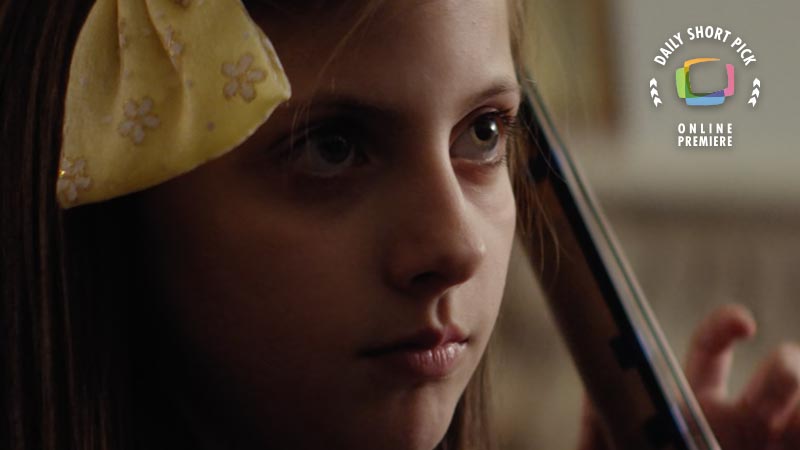Having downloaded a self help program devised and narrated by the enigmatic MAX, we follow ASH, as he prepares to tackle Lesson 7: Confronting death. What begins as a seemingly innocent and melancholic trip to a near deserted hospital ward in the late night hours, becomes a twisting journey of anguish and manipulation.
Film Shortage is delighted to catch up with director Neil Linpow.
Where did the inspirations for this film come from?
It comes from a shared interest that myself and writer Hunter Andrews have about the malleability of identity. I think for many people, their phone is their most trusted confidant. We take it everywhere with us, let it into our psyche and desires. We trust the apps we download, the audiobooks, podcasts and life guides we listen to. It’s the place we look to find the answers to both our passing whims and our deeper more existential life questions. We wondered what it might look like if one of the smart devices or phone apps we give this intimate access to our lives could lead us towards violence and madness? How far could we allow ourselves to be pushed in the pursuit of freedom from the constraints of modern society?
Does Ash have a little more of a backstory? What’s he seeking help for?
Ash is a man in an existential crisis, turning to the wrong person for help. He has spent his entire life toeing the line, fitting in and conforming, and it’s left him feeling utterly dissatisfied at his mediocrity. He’s looking for change. For something else. When he discovers Max’s 10 step guide, ‘We can set you Free,’ the first ‘lessons’ are positive and affirmative, but by the time we meet him, he’s in very deep. We’ve laid in one or two hints at what may have proceeded lesson 7. The missing finger, the car air freshener, etc.
How did you manage to cast Michelle Fairley as the voice?
Funnily enough, Max had always been written with a very authoritative older males voice in mind. A Patrick Stewart kind of vibe. But as editor Elena De Palma and I were moving through the beats in the edit, and the more I explored self help guides, it struck me that the most beautifully honest and persuasive were often the female led audio books. It completely changed how I saw Max. I have always been a huge fan of Michelle’s. She has such a relatable and trusted quality in her voice. Her characters are so often caring and nurturing but hide a darkness below the surface, which was perfect for Max. Casting director Gemma Sykes sent her the script and fortunately for us, she liked the project. When the first lockdown lifted, she came in and recorded the VO for us in a couple of hours. It was one of the very last things we did.
Tell us about the production, which equipment did you use how was everything handled inside the shooting location?
I guess like a lot of short films, the only budget we had was whatever I had lying around in my pocket, and reliant on any favours we could pull in. We were lucky enough to find an amazing location who were prepared to help us out. Our art department whiz, Mariana did an incredible job of making the location feel alive. You’d never guess that it’s a long abandoned hospital wing, with no heating or running water on site in freezing cold December!
As we had the location for just one day, with a lot to cover, DOP Job Reineke and I had planned the shoot pretty meticulously. We shot on Alexa Mini with Cooke Anamorphics and shot on stedicam. This meant we were quick, but also gave Ash’s journey a sense of graceful, pensive fluidity, and let the performance dictate the camera work. Once he enters the final room, it’s all handheld. The idea as Max permeates further into his mind, the camera and edit becomes looser and more erratic too.



